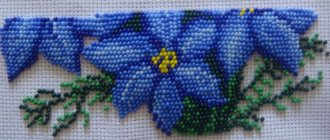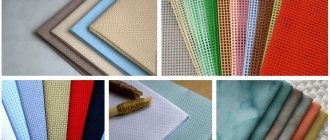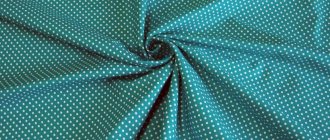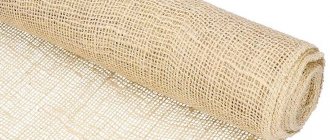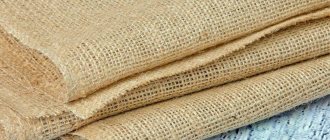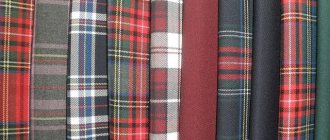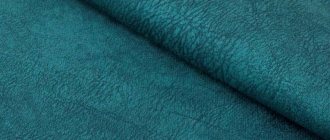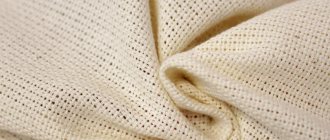BIOLOGICAL DEPARTMENT OF THE CENTER OF TEACHING EXCELLENCE
Author of the article Zybina A.M.
Tissue is a collection of cells and intercellular substance that have a similar structure, origin and functions. There are 4 types of tissues in the human body: epithelial, connective, muscle and nervous.
Epithelial tissue
Epithelial tissues are divided into two types: integumentary and glandular. Its main functions:
- barrier (protective);
- delimiting;
- metabolic (absorption and excretion);
- secretory;
- receptor.
The location and function of epithelial tissues are very diverse, so it can be formed from any of the three germ layers.
The integumentary epithelium (Fig. 1) separates the body from the external environment and lines the internal organs. Thus, on the one hand, it is a barrier tissue, and on the other, an exchange tissue. In this regard, the main feature of the structure of the epithelium is a large number of tightly closed cells and a small amount of intercellular substance. The epithelium lies on a basement membrane (a layer of proteins and polysaccharides), under which connective tissue is located. There are no blood vessels in epithelial tissue. They are located in the connective tissue and are nourished by the diffusion of gases and nutrients.
Depending on the shape of the cells, the integumentary epithelium is divided into flat, cubic and prismatic (cylindrical). Cells of the prismatic epithelium, depending on the functions they perform, may have microvilli or cilia (ciliated epithelium) (Fig. 2). Moreover, the cells themselves can be located in one or several layers (single-layer and multilayer epithelium, respectively). The latter property is more characteristic of squamous epithelium. Multilayer cuboidal and prismatic epithelium are found, but rarely, mainly in the places where the stratified squamous epithelium transitions to single-layer cuboidal or prismatic epithelium.
Multilayered squamous epithelium can be keratinizing and non-keratinizing. In single-layer epithelium, all cells are in contact with the basement membrane. If inside a single-layer epithelium the cells are the same size and all the nuclei are located at the same level, then it is called uniseriate; if not, it is multirowed. The transitional epithelium (uroepithelium) lining the bladder, urinary tract and allantois are separately distinguished. It contains several layers: basal, intermediate, consisting of pear-shaped cells, integumentary, consisting of large cells covered with mucus. The thickness of this epithelium varies depending on the degree of stretching of the wall of the urinary organs (Fig. 3).
Rice. 1. Morphological classification of epithelium: 1 - single-layer squamous epithelium; 2 - single-layer cubic epithelium; 3 - single-layer (single-row) columnar (prismatic) epithelium; 4, 5 - single-layer multirow (pseudostratified) columnar epithelium; 6 - stratified squamous non-keratinizing epithelium; 7 - stratified cubic epithelium; 8 - stratified columnar epithelium; 9 - stratified squamous keratinizing epithelium; 10 - transitional epithelium (urothelium). (Source: https://vmede.org/sait/?page=7&id=Gistologiya_atlas_bikov_ushk_2013&menu=Gistologiya_atlas_bikov_ushk_2013)
Rice. 2. Electron micrographs of the epithelium with microvilli (a) and with cilia (b).
Fig.3. The structure of the transitional epithelium. a - with an unstretched organ wall; b - with a stretched wall of the organ. 1 - transitional epithelium; 2 - connective tissue. c – histological section with an unstretched wall. I - transitional epithelium: 1 - basal layer of cells, 2 - intermediate layer, 3 - superficial layer (the cells are close to cubic in shape); II - loose fibrous connective tissue (under the epithelium)
The location of the main types of epithelium is as follows:
- single-layer prismatic epithelium with cilia (ciliated epithelium) – respiratory tract;
- single-layer prismatic epithelium with microvilli – intestinal wall;
- single-layer cuboidal epithelium lines the convoluted renal tubules, excretory ducts of the salivary glands and terminal bronchioles;
- single-layer squamous epithelium - lines the cavities of blood and lymphatic vessels, as well as the heart;
- multilayered squamous non-keratinizing epithelium – mucous membranes, upper gastrointestinal tract (Fig. 4b);
- stratified squamous keratinizing epithelium - skin epidermis (Fig. 4a).
Rice. 4. Multilayer keratinizing (a) and non-keratinizing (b) squamous epithelium: 1 - superficial layer; 2 - spinous layer; 3 - basal layer; 4 - underlying connective tissue
Multilayer epithelium is heterogeneous in cellular composition. The keratinizing epithelium can have up to five layers (using the example of the skin epidermis):
- basal – layer of dividing cells, contains melanocytes in the skin;
- spinous - polygonal cells with convexities that coincide with the depressions of other cells;
- granular - diamond-shaped cells at the initial stage of keratinization;
- shiny - flattened anucleate cells that continue to lose intracellular structures, present in the hairless skin of the palms and soles;
- horny - horny scales that gradually peel off from the surface of the skin
Multilayered squamous non-keratinizing epithelium consists of three layers: basal, spinous and superficial, which consists of flat cells that are constantly exfoliating.
Despite the diversity of structure of different types of epithelium, they all perform their functions and strictly control the entry and exit of substances from the body. To prevent the transport of unwanted water-soluble compounds into the body, cells are equipped with tight junctions that prevent paracellular (intercellular) transport (Fig. 5). In such contact, cell membranes are brought as close as possible and cross-linked by the proteins claudins and occludins. In the presence of tight contact, all water-soluble compounds are transferred strictly through the cell, equipped with special transporters or channels for them. Lipophilic compounds can freely pass through the membrane. Therefore, to protect against unwanted lipophilic compounds, cells are equipped with ABC transporters (ATP binding cassette). This is a superfamily of proteins capable of transferring a wide variety of compounds from the cell to the external environment using the energy of ATP.
Fig.5. The structure of a tight junction (a) and an electron micrograph of a tight junction (arrow) between two enterocytes of the rabbit jejunum, x 50,000 (according to V. A. Shakhlamov) (b). Source of structure of tight junction Wikipedia tight junctions
The glandular epithelium forms glands of internal (endocrine), external (endocrine) and mixed secretion. The integumentary epithelium may contain many small glands.
Endocrine glands (Fig. 6b) do not have excretory ducts and are surrounded by capillaries. They secrete biologically active substances into the bloodstream. Exocrine glands (Fig. 6a) have excretory ducts and remove secretions through them into the external environment or body cavities. Mixed secretion glands consist of endo- and exocrine parts.
Rice. 6. The structure of exocrine and endocrine glands (according to E. F. Kotovsky): a - exocrine gland; b - endocrine gland. 1 - end section; 2 - secretory granules; 3 - excretory duct of the exocrine gland; 4 - integumentary epithelium; 5 - connective tissue; 6 - blood vessel
Connective tissue
Connective tissue is the most abundant tissue in the entire body (more than 50%). It is of mesodermal origin. The peculiarity of this tissue is a large volume of intercellular substance with a relatively small volume of cells. The intercellular substance may include collagen, elastin and minerals. The connective tissue of the body is in several states:
- hard (bone);
- gel-like (cartilage);
- fibrous (ligaments);
- liquid (blood and lymph).
Fig.7. Variety of connective tissues. From left to right: loose connective tissue, dense connective tissue, cartilage, bone, blood.
Connective tissue has a complex classification (Fig. 8). It includes blood, lymph, hematopoietic tissues, bones, cartilage, ligaments, adipose tissue, etc. Its varied structure and location allows it to perform a variety of functions:
- transport (movement of gases, nutrients, organisms in space);
- nutritious;
- protective (against blood loss, immunity);
- supporting;
- structure-forming;
- energy;
- heat insulating.
Rice. 8. Classification of connective tissues. Source https://vmede.org/sait/?page=8&id=Gistologiya_atlas_bikov_ushk_2013&menu=Gistologiya_atlas_bikov_ushk_2013
Rice. 9. Composition of blood plasma.
Blood is liquid connective tissue. It consists of 55% plasma (intercellular substance) and 45% formed elements (cells) of blood. Blood plasma is 90-92% water. The dry residue contains 7-9% organic and 1% inorganic substances (Fig. 9). The organic component of plasma is blood proteins, metabolic products and nutrients. Inorganic substances in plasma include various ions that maintain osmotic pressure and pH of the blood.
The formed elements of blood are cells and postcellular elements that perform various functions. All of them are formed in the red bone marrow. The most numerous of the blood cells are erythrocytes, or red blood cells (Fig. 10). These are anucleate cells, shaped like a biconcave disk, with a diameter of 7-10 microns. Content in the blood is 3.9-5.5 million/µl. Red blood cells contain hemoglobin, which carries oxygen from the lungs to all other tissues. They are formed in the red bone marrow and after 100-120 days are metabolized in the spleen.
Rice. 10. Formed elements of blood. From left to right, erythrocyte, platelet, leukocyte.
The second most numerous are platelets (Fig. 10) (250-350 thousand/μl). These are small, nuclear-free plates with a diameter of 2-4 microns. These are postcellular structures formed from megakaryocytes located in the red bone marrow. They protect our body from excess blood loss due to injury.
The smallest formed elements are leukocytes (Fig. 10). This is a group of cells that provide all types of immunity. Their number in the blood is small (4-8 thousand/ml), since most of them migrate into tissues or are localized in immune organs.
Lymph is a transparent connective tissue devoid of red blood cells. However, it is rich in leukocytes. The composition of lymph is similar to blood plasma. The function of the lymphatic system is to drain excess fluid released from the capillaries into the tissue and return it to the bloodstream.
The hematopoietic tissue of an adult is red bone marrow (Fig. 11). In the embryonic period, the hematopoietic function can also be performed by the spleen and liver. Red bone marrow is located in the epiphyses of large tubular bones. It consists of reticular connective tissue, stem cells and immature blood cells. On average, bone marrow makes up approximately 4% of body weight. In children, it is completely occupied with hematopoiesis. In adults, approximately half of the bone marrow forms blood, and the other half is inactive and is called yellow bone marrow.
Rice. 11. Location of red bone marrow.
Fibrous connective tissues can be loose or dense.
Loose fibrous connective tissue is located mainly along the blood and lymphatic vessels, nerves, forms the stroma of many internal organs, as well as the submucosa, subserosa and adventitia.
Dense fibrous connective tissue, thanks to its well-developed fibrous structures, primarily performs supporting and protective functions. Its intercellular substance is dominated by fibers. Connective tissue fibers can be woven in different directions (unformed dense fibrous tissue), or located parallel to each other (formed dense fibrous tissue).
Unformed, dense fibrous connective tissue entwines nerves and surrounds organs. This tissue forms the sclera of the eye, the periosteum and perichondrium, the fibrous layer of the joint capsules, the reticular layer of the dermis, the heart valves, the pericardium and the dura mater. Formed dense fibrous connective tissue forms tendons, ligaments, fascia, and interosseous membranes.
Adipose tissue (Fig. 12) consists of cells (adipocytes) in which fat droplets are stored and poorly developed intercellular substance (collagen and elastic fibers, amorphous substance). In the cytoplasm of the adipocyte there is one large drop of fat, and the nucleus and organelles are pushed to the periphery. White adipose tissue makes up 15-20% in men and 20-25% in women of body weight.
Newborns and children in the first months of life have brown adipose tissue in addition to white fat. With age, brown adipose tissue undergoes atrophy. In adults, it occurs: between the shoulder blades, near the kidneys and near the thyroid gland. The nucleus of brown fat cells is located in the center of the cell, and the cytoplasm contains many small droplets of fat.
Rice. 12. Histological preparations of brown (left) and white (right) adipose tissue.
Reticular connective tissue forms the spleen, lymph nodes and red bone marrow. It is the framework for hematopoietic cells and lymphocytes. Participates in the regulation of hematopoiesis and immunity.
Mucous connective tissue consists of poorly differentiated cells - fibroblasts and a large amount of intercellular substance (fibers and amorphous substance with hyaluronic acid). It is part of the umbilical cord of the embryo. Provides turgor (elasticity) to the tissues of the umbilical cord and prevents the possibility of pinching the blood vessels feeding the embryo.
The pigment connective tissue is enriched with pigment cells - melanocytes. There is a lot of pigment tissue in the iris of the eye, in the skin of the nipples of the mammary glands, and around the anus. Protects from the damaging effects of ultraviolet radiation.
Skeletal connective tissues are divided into bone and cartilage.
Bone tissue is hard and durable. This tissue is an important part of the skeleton. It consists of bone cells - osteoblasts, which deposit a large amount of intercellular substance and, walling themselves up, lose the ability to divide and turn into osteocytes. The space around the osteocyte is called a lacuna. The intercellular substance contains collagen fibers impregnated with inorganic compounds, among which calcium phosphates predominate. Bone cells are arranged concentrically around the Haversian canal, which contains blood vessels that feed the bone. The Haversian canal with cells located around it is called an osteon and is a structural unit of bone (Fig. 13, 14). The direction of osteons depends on the load acting on the bone.
Bone tissue is renewed throughout life. The destruction of old bone is carried out by osteoclasts migrating through the Haversian canal. New bone tissue is built by osteoblasts.
Rice. 13. Structure of osteon. Source https://vmede.org/sait/?page=7&id=Gistologija_atlas_boi4uk_2008&menu=Gistologija_atlas_boi4uk_2008
Rice. 14. (compact substance of the diaphysis of the tubular bone, cross section). Osteons (1) and intercalated bone plates (6) are visible. In the osteon, the osteon canal (2), concentric bone plates (3), bone cavities or bodies (lacunae containing osteocytes) (4), and commissural line (5) are clearly visible. Schmorl staining. Source https://vmede.org/sait/?page=7&id=Gistologija_atlas_boi4uk_2008&menu=Gistologija_atlas_boi4uk_2008
Cartilage tissue, compared to bone, contains more water and organic matter, and less minerals. Cells of cartilage tissue, or chondrocytes, are located in cavities (lacunae) and are surrounded by intercellular substance. There are three types of cartilage:
- hyaline cartilage (Fig. 15a) forms costal and articular cartilages;
- elastic cartilage (Fig. 15b) contains many elastic fibers and forms the cartilage of the larynx and the auricle;
- fibrocartilage (Fig. 15c) contains many collagen fibers and forms the fibrous rings of the intervertebral discs, articular discs and menisci.
Rice. 15. Histological sections of hyaline (a), elastic (b) and fibrous (c) cartilage.
Muscle
Muscle tissue performs a motor function. Their important property is the ability to excite and contract. Muscle tissues are of mesodermal origin. There are three types of muscle tissue: skeletal, smooth and cardiac.
Skeletal muscles are formed by cylindrical fibers 1-40 mm long and 0.1 microns thick. The cells are multinucleated and have cross-striations (Fig. 16). The striation appears due to the ordered arrangement of contractile fibers in the cell. Together they form the sarcomere, the functional and contractile unit of muscle (Fig. 17). Thin fibers are called actin, thick ones are called myosin. Actin is attached to the Z-plate and is the passive part of the sarcomere. Myosin has ATPase activity and is actively involved in contraction. It has heads with which it attaches to actin and brings actin fibers together during contraction. This tissue structure allows for fast and strong contractions, however, skeletal muscles fatigue relatively quickly. Under the influence of impulses from the central nervous system, it contracts and allows for voluntary movements and movements of the body in space.
Rice. 16. Schematic structure (a) and histological section (b) of striated skeletal muscle.
Rice. 17. Scheme of structure and operation (a) and electron micrograph (b) of the sarcomere.
Smooth muscles are mononuclear spindle-shaped cells without striations. The contraction of these cells is carried out by actin and myosin, however, their distribution differs from skeletal muscles (Fig. 18). Contractile fibrils in smooth muscle cells are arranged diagonally and are attached to dense bodies. Due to the lack of parallel arrangement of contractile fibers, there is no striation in these cells. Unlike skeletal muscles, ATP energy is not consumed for each myosin stroke, which allows energy to be spent more economically.
Smooth muscles are located primarily in the walls of organs and blood vessels and are controlled by the involuntary autonomic nervous system.
Rice. 18. Scheme of structure and contraction (a) and histological section (b) of smooth muscle.
Cardiac muscle consists of mononuclear cells with striations. Myofibrils are located along the cells and form sarcomeres. To quickly and efficiently transmit an electrical impulse from one cell to another, gap junctions, or connexons, are located at the cell border. They connect the cytoplasms of neighboring cells with a channel so that ions can move freely from cell to cell. Concentrating on the poles, the slot contacts form insertion disks (Fig. 19).
Rice. 19. Histological section of the heart muscle. Arrows indicate insertion disks and slot contacts.
The cardiac muscle, as the name suggests, forms the wall of the heart.
Nervous tissue.
Nervous tissue forms all parts of the nervous system. It is of ectodermal origin. The main characteristics of nervous tissue are the ability to perceive, conduct and transmit nerve impulses. It consists of nerve cells, or neurons, and neuroglial cells (Fig. 20).
Rice. 20. Structure of nervous tissue.
A neuron is a structural and functional unit of the nervous system. It consists of (Fig. 21):
- the neuron body, or soma, in which the nucleus and organelles of the cell are located;
- dendrites, along which impulses travel to the cell from other cells;
- the axon along which the impulse comes from the soma and is transmitted to other cells.
Rice. 21. Structure of a neuron.
Thus, a neuron can transmit impulses in only one direction. It receives many signals along the dendrites, then they are transmitted to the body, and then to the axon. The axon and dendrite form a special contact, which is called a synapse (Fig. 22).
Rice. 22. Structure of the synapse.
The transfer of information from axon to dendrite at a synapse is carried out using chemicals called neurotransmitters, or neurotransmitters.
Neuroglial cells are a collection of supporting cells of the nervous system. They are divided into microglia and macroglia.
Microglial cells are derived from macrophage progenitor cells. Thus, their origin is different from all other cells of the nervous tissue. They are capable of phagocytosis of foreign brain particles, and also play an important role in the development and regeneration of the central nervous system.
Macroglia include several cell types: astrocytes, oligodendrocytes, and ependymal cells.
Astrocytes are stellate cells with many processes. They support and delimit neurons into groups, regulate the composition of the intercellular fluid, store nutrients, regulate the growth, development, repair and activity of neurons, participate in the removal of neurotransmitters from the gap, and form the blood-brain barrier (BBB). Astrocytes ensure the vital activity of neurons and make their life as comfortable as possible.
Oligodendrocytes are cells of the central nervous system that provide myelination of axons. Myelin is an electrically insulating sheath that speeds up the conduction of nerve impulses. Myelin is formed as a flat outgrowth of the oligodendrocyte membrane, which is repeatedly wound around the axon. In the peripheral nervous system, cells that perform a similar function are called Schwann cells.
Ependymal cells line the walls of the ventricles of the brain and the spinal canal.
These are cells with cilia, the beating of which ensures the circulation of cerebrospinal fluid. They are also capable of performing a secretory function. # Human anatomy
ARTIFICIAL FABRICS
Viscose
Viscose is the most striking example of artificial fabrics. It is made from natural cellulose, which in turn is produced from coniferous wood. Viscose is similar in composition to cotton, but when the thickness and nature of the fibers change, viscose can become similar to wool, silk and even linen. Viscose is often added to natural fabrics, which does not affect their quality in any way, but significantly reduces their price. Viscose fabric is soft, easily breathable and does not electrify. In addition, viscose allows you to create very bright and colorful shades, which makes it indispensable when decorating rooms. Among the disadvantages, one can highlight the fact that viscose wrinkles very easily, fades and is not highly wear-resistant.
